Homebuyers Guide to Smart Home Technology

Whether you’re looking to adjust the temperature without getting out of bed, ensure your garage door is closed after you’ve left for work, or want to keep an eye on your home while away on vacation, the best smart home devices provide complete convenience.
To get a better idea of what is possible for your home, let’s explore some of the most popular smart home devices homeowners are choosing to install.

1. Smart Speakers & Choosing an Assistant
Smart home devices have apps for Android and iOS devices, making them compatible with the majority of mobile devices and tablets. If home automation is the sundae, think of voice assistants as the cherry on top. Voice assistants allow you to seamlessly control your smart home devices using verbal commands through one smart home platform.
There are three major smart home platforms that currently dominate the market – Google Nest with Google Assistant, Amazon Echo with Alexa, and Apple HomeKit with Siri. Most home automation devices connect with at least one of these smart home hubs.
These smart home assistants not only respond to your verbal commands to activate various smart appliances, but can also assist with daily tasks and scheduling. There are various models available that function similarly but have their own unique features.
The biggest thing to consider? Whether or not the voice assistant can understand you. The best smart home assistants recognize you no matter what you’re saying or how you’re saying it. Keep in mind, some brands have limited voice interactions meaning you’ll have to use specific, scripted verbiage when making commands.
Think about what you will use your home assistant for the most to determine your priorities. Whether it’s your home security system or your audio equipment, be sure to select a digital assistant that is compatible with those devices.
Finally, look for versatile smart speakers. The major smart home platforms allow for multi-room capabilities with separate speakers. Some speakers can mount to walls or sit on flat surfaces, while others are freestanding and take up more room. Choose a speaker that works well with the space you have.
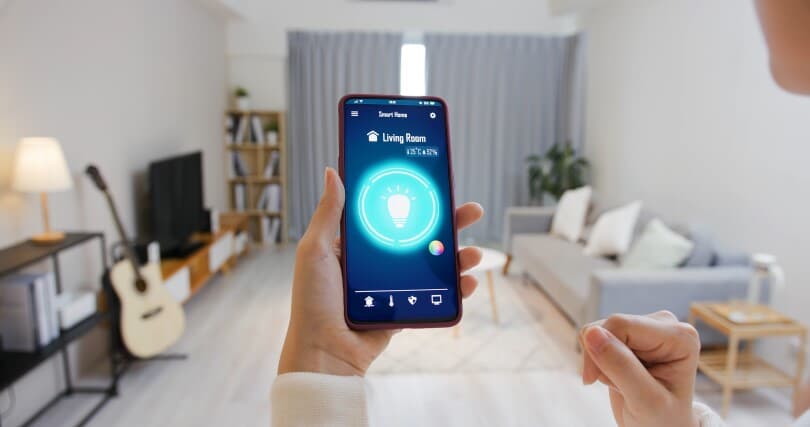
2. Smart Light Bulbs
Smart light bulbs are one of the most affordable devices on the market and they make adjusting your lighting more convenient and customizable than ever before. Smart bulbs contain software that connects to an app, smart home assistant, or other smart accessories so you can automate your lights or control them remotely – eliminating the need for traditional wall switches.
You can set timers for your lights and create schedules or routines to turn them on and off at a set time or based on specific actions. This is a great feature to have if you’re away for work or vacation as it will mimic the presence of someone being home.
Traditional bulbs require you to use the switch to control the lights meaning if you want to be able to dim your lights, you need a dimmer switch in the wall. Smart light bulbs, however, can be controlled – including to dim – via the app or other smart accessory.

3. Smart Thermostats
A smart thermostat is a thermostat that can be controlled with a phone, tablet, smart speaker, or other internet-connected devices. Smart thermostats can offer a variety of features beyond remote-access to adjust the temperature of your home.
Some thermostats, like Nest Smart Learning, can learn your heating and cooling preferences and automatically adjust based on your schedule. Many have diagnostic features that can detect when there’s a problem with your ducting or HVAC system. You can also receive reminders when it’s time to perform system maintenance like changing the air filter. Additionally, your smart thermostat may be able to provide you with details regarding your energy consumption and factors like heat waves that may have contributed to a drastic change in your usage.
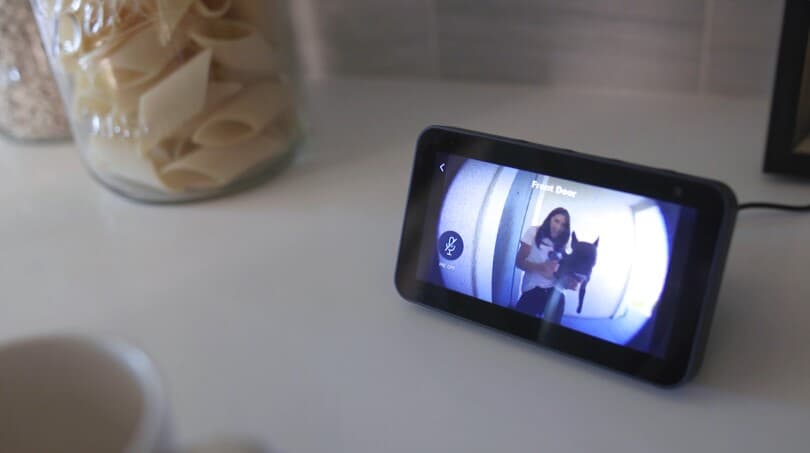
4. Home Security Cameras & Video Doorbells
Both home security cameras and video doorbells allow you to remotely see what’s going on at your home. Video doorbells are outdoor cameras that may or may not be hardwired into your existing doorbell setup. You receive notifications whenever the doorbell is pressed or activity is detected near your front door.
Home security cameras let you see what’s going on at home while you’re away. They can usually be installed both inside and outside your home, depending where you want visibility. Oftentimes they can be connected to full home security systems.
Smart home security systems are designed to connect directly to your internet router. They can monitor doors, windows, other points of entry, and detect any changes within a room. The system will alert you when it detects anything abnormal so you can quickly take action if needed.
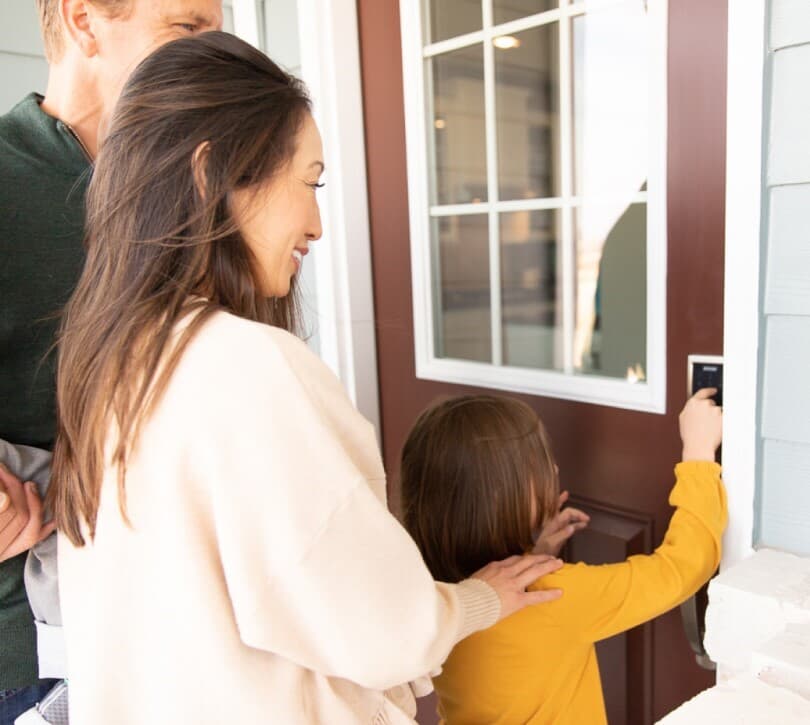
5. Keyless Entry & Remote Garage Access
Whether it’s your front door or the garage, being able to enter and exit your home without having to keep track of keys and clickers has its benefits. But the benefits of these smart devices extend beyond easy access – you’re able to remotely monitor accessibility so you can be sure you closed the garage door and locked the front before you left for the day.
Smart keypads allow you to type in a code to unlock your home. You can give someone access to your home while you’re away, the kids can come home from school without the worry of lost keys, and you can enjoy additional perks such as a built-in alarm. You can assign unique codes to users as well as schedules in which the codes will work so you can keep track of who is coming and going into your home and ensuring it’s within timeframes you’ve authorized.
Smart garage door openers are a convenient solution that is often overlooked. While some smart garage door devices work with your existing garage door opener, others have smart features built right into the opening mechanism itself. Get notified on your phone when your garage door opens, or when it’s been open for longer than usual. Don’t have your remote handy? Can’t remember if you closed it after leaving for work? You can easily control it from your phone – it’s equal parts safety and convenience.
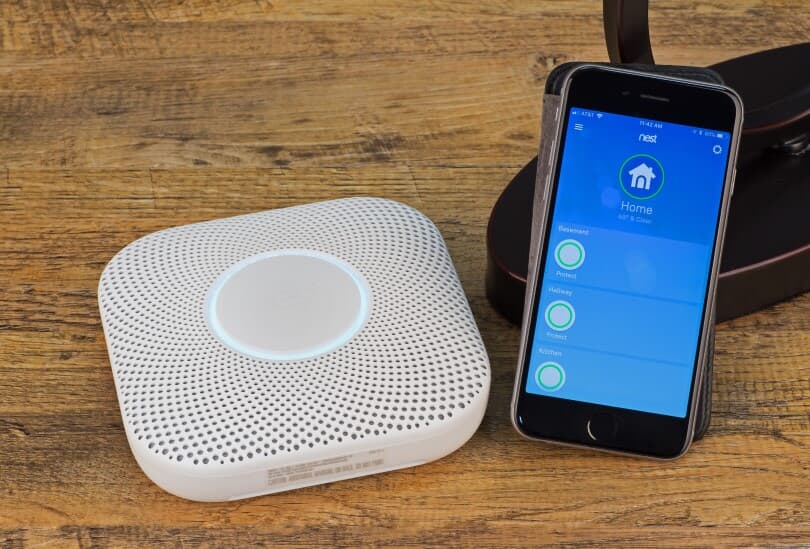
6. Smart Smoke & Carbon Monoxide Detectors
There’s nothing quite as annoying as the chirp of your smoke detector and it inevitably seems to happen in the middle of the night. By swapping out your traditional smoke and carbon monoxide detectors for smart ones, you receive notifications directly on your phone when they need attention.
In addition to alerting you if smoke or carbon monoxide is present, smart detectors have a multitude of other safety features as well. Self-testing capabilities ensure the detector is performing in peak condition to keep you and your family safe. Some shine a light when smoke is detected to help illuminate a path in case of emergency. Others use voice alerts instead of a siren sound to be more child-friendly.
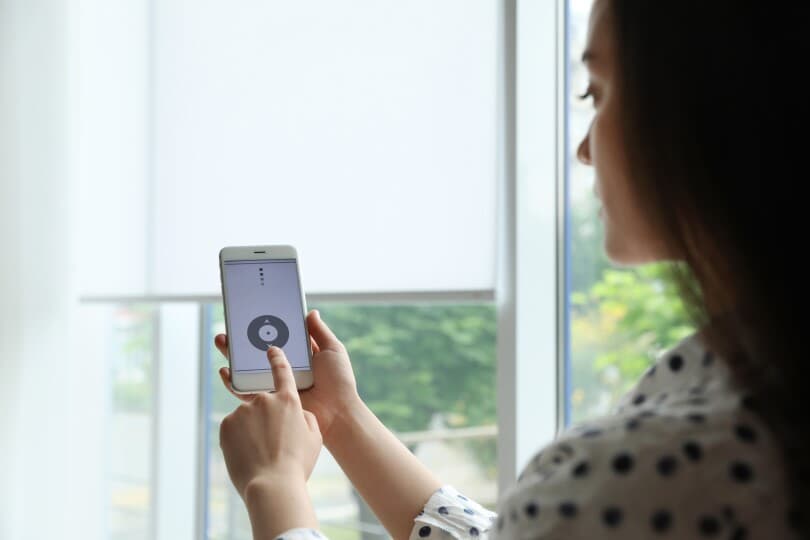
7. Smart Blinds
Smart blinds let you control the light and privacy in a room, no matter where you are. Imagine opening your window blinds every morning without getting out of bed or watching your coverings close automatically when the sun sets.
Not only can you open and close your blinds on demand, you can schedule them throughout the day. For example, if your west-facing windows soak up that afternoon sun and heat up your living room, you can time it so they close before the sun makes its way to that side of the house.
Smart blinds come in a variety of light filtering options, so much like traditional window coverings, you’ll need to decide which window treatment works best in each room.
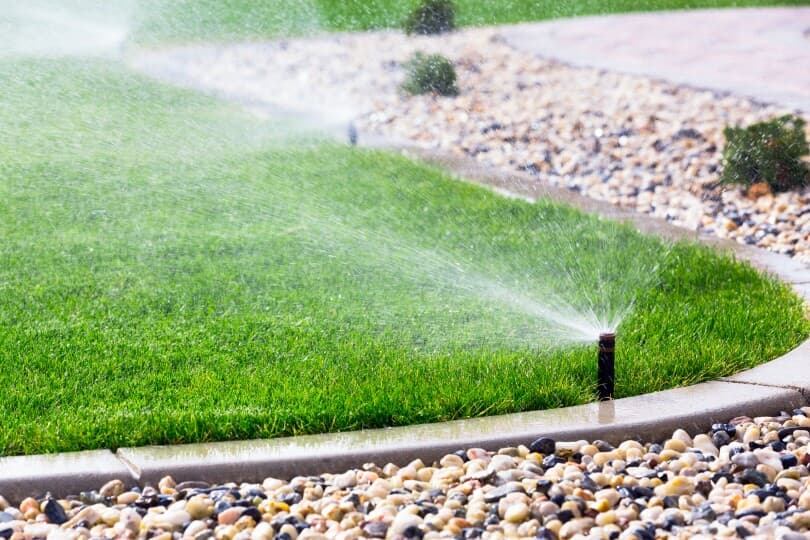
8. Smart Irrigation
Water is our most precious resource and if you’re in an area experiencing a drought, it’s even more important to be mindful of your water usage. A smart irrigation system will not only save water, but your time and money as well.
Smart irrigation systems allow you to make adjustments to your watering schedule through an app as well as automatically adjust based on local weather or ground moisture levels. In most cases, smart watering technology can be installed on your existing irrigation system and will cut your water usage by 20 – 40%.
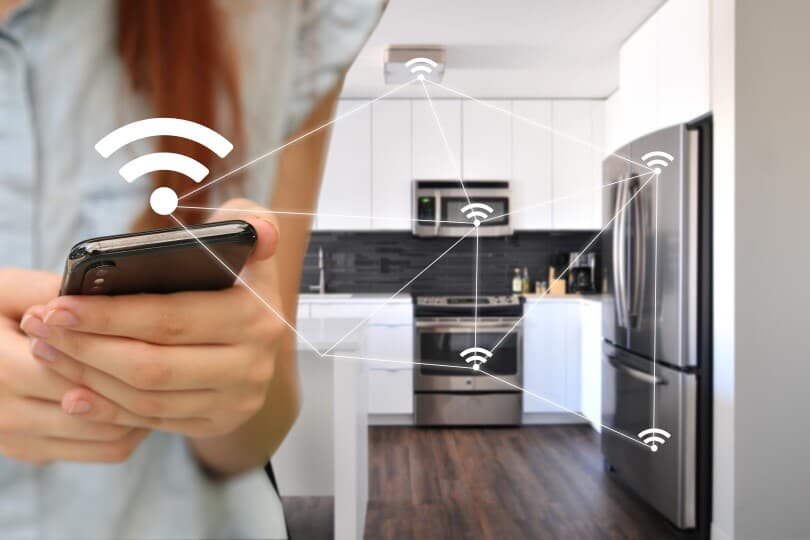
9. Smart Appliances
Smart home technology has evolved to include appliances within your home. Refrigerators are by far one of the most popular and advanced smart appliances. Many of them have a tablet-like screen built into one of the doors which can serve as a memo board – a grocery list you can write directly on your fridge!
Some smart fridges have a built-in camera, so you can take a peek inside to check while you’re wandering the grocery aisles. No more getting home and realizing you forgot the eggs. Transparent panels in the door allow you to see inside your fridge without having to open the door and let the cold air out.
Smart refrigerators don’t deserve the entire spotlight, however. Other kitchen appliances can be controlled remotely including microwaves, dishwashers, and ovens. You can easily start the oven preheating while you’re finishing up another task.
Beyond the kitchen, appliances such as your washer and dryer have the capacity for smart features. While they’re not able to fold and put away your laundry (at least for now!), you can start, stop, check status, and receive end-of-cycle notifications on your phone.
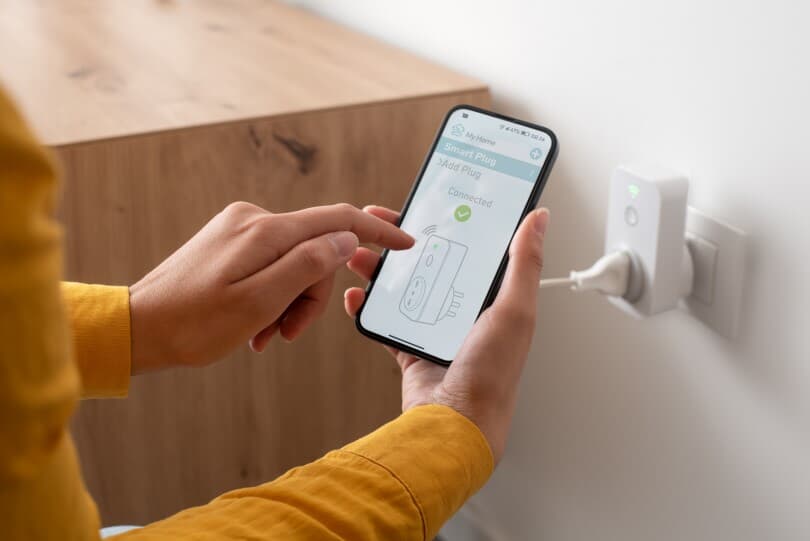
10. Smart Plug
A smart plug is a great workaround to take your “dumb” appliance and make it smarter. For example, take your favorite table lamp, connect it to the smart plug, plug it into the wall and presto, you’ll be able to control your lamp from your phone. You can set schedules for the plugs to turn on and off as well as link them to other smart home devices.
Smart plugs can be used in a variety of creative ways: controlling holiday decorations, accessing power outlets hidden behind bulky furniture, scheduling your morning coffee to brew before you wake up, or even for your hair appliances! No more wondering if you turned off the straightener before you left.

Turning your home into a smart home may seem daunting, but it doesn’t have to be! When you buy a new home from Brookfield Residential, it comes with included myCommand smart home technology. With the flexibility of choosing an Amazon, Apple, or Google device, you can have access to your home anytime and anywhere. By incorporating these features as standard, we ensure a seamless user experience from day one and beyond.
We are committed to creating and innovating the best places to call home – and this is just the beginning. Be sure to explore where we build and contact us to learn more. We’ll be expecting you!
